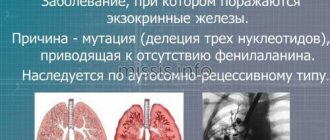If the immune system is weakened, pharyngitis can be caused by a fungal infection. But the fungal form can also be a consequence of taking antibiotics. Potent antibacterial drugs destroy not only the infection, but also beneficial microorganisms that form a protective barrier and are the basis of normal human microflora. Because of this, the body's defenses are weakened, which leads to the growth of fungal flora in the oral cavity and the appearance of an inflammatory reaction.
A weakened immune system makes it easier for any infection, viral or bacterial, to penetrate. In addition to antibiotics, the body’s defenses are weakened by chronic and recent diseases, pathological processes in the oral cavity, for example, complicated caries.
But what is the source of infection?
Infection occurs by airborne droplets from person to person. In rare cases, it can occur due to tactile infection against the background of ARVI.
Viruses concentrate in the air, especially in closed and unventilated areas. However, the virus remains dangerous for up to a week.
Damage to the mucous membrane from dental structures - braces, dentures - can lead to exacerbation. Long-term wearing leads to damage to the mucous membrane, a decrease in its protective properties, and local immunity is also reduced. As a result, infectious pathogens that enter the oral cavity along with air and food begin to actively multiply, provoking the development of inflammation.
Pharyngitis can also develop due to non-infectious causes:
- Sudden change in temperature;
- Exacerbation of chronic allergic pathology;
- Getting a foreign object into the throat;
- Burns of the oral mucosa;
- Consumption of food and drinks at uncomfortable temperatures;
- Constantly being in a smoky room;
- Unfavorable working conditions;
- Smoking, drinking alcohol;
- Getting acid from the stomach onto the walls of the pharynx and esophagus (with gastroesophageal reflux);
- Regular use of vasoconstrictor drops, which are prescribed for chronic rhinitis and sinusitis2,3.
Classification of pharyngitis: acute and chronic
Doctors distinguish two forms of pharyngitis - acute and chronic. As a rule, the first form of the disease is concomitant with existing other diseases - for example, pharyngitis often accompanies the course of influenza or acute respiratory viral infection.
In the case of the development of a chronic form, doctors talk about isolated pharyngitis, which can be of the following types:
- atrophic;
- hypertrophic.
It is noted that both types of chronic pharyngitis have a similar clinical picture and a specific one can be diagnosed only after examination.
Symptoms and treatment of pharyngitis in adults are described here.
Diagnostics
The complete system for diagnosing chronic pharyngitis is determined by pharyngoscopy, which is performed by a specialist. Its results make it possible to make a diagnosis based on the following criteria:
- catarrhal form: slight swelling, thickening of the mucosa;
- hypertrophic: swelling; venous network; red nodules;
- atrophic: too thin and dry mucous membrane of pink color; crusts with viscous mucus.
To clarify in more detail the cause of inflammation, the doctor takes a smear from the throat. You may also need additional examination from other specialists.
Reasons for development
The disease in question may be the result of infection with specific pathogens - for example, staphylococcus, streptococcus, diphtheria bacillus. In this case, we are talking about the possible spread of the disease by airborne droplets. But most often the causes and development of pharyngitis are:
- constant exposure to irritating substances on the pharyngeal mucosa - cigarette smoke, alcohol, too polluted air;
- prolonged exposure to cold air and inhalation through the mouth;
- influenza viruses and/or adenoviruses;
- mushrooms such as Candida.
Read about what granulosa pharyngitis is here.
If a person is diagnosed with infectious rhinitis, sinusitis or banal caries, then one can expect the penetration of pathogenic microorganisms into the mucous or lymphoid tissues of the pharynx - the development of pharyngitis in this case is inevitable.
Features of use, dosage, contraindications
Most medications used for pharyngitis are available in tablet form or spray. It is necessary to follow the instructions written in the instructions for the drugs. Some tablets need to be chewed, others are dissolved or simply swallowed and washed down with water.
Compared to other dosage forms, the use of sprays has advantages. The active substance is sprayed directly onto the source of inflammation, onto the affected mucous membrane of the throat. A protective film is immediately formed, which has an antimicrobial, anti-inflammatory and analgesic effect.
Dosages of medications depend on the age of the patient and the severity of the disease. For children, drugs are available in pediatric form. As a rule, with a lower content of active substance.
Contraindications to the use of medications for pharyngitis can be very different. This includes individual intolerance to the components included in the medicine. And diabetes mellitus, because many lozenges contain sucrose. Also, when taking certain medications, you cannot drive a vehicle or perform work that requires increased reaction and attention. Because the drugs have a sedative effect.
Before starting treatment, be sure to carefully read the instructions for the medicine and consult your doctor.
Symptoms of pharyngitis
In the acute course of this disease, patients complain of the following symptoms:
- difficulty swallowing – even drinking water and/or swallowing your own saliva causes severe pain in the throat;
- sensation of a lump in the throat - the so-called “soreness”, the patient constantly tries to clear his throat;
- body temperature either remains normal or rises slightly (not critical and short-term).
We recommend that you familiarize yourself with the symptoms and treatment of acute pharyngitis in adults in this material.
The general condition of acute pharyngitis remains satisfactory, but the patient may experience an increased feeling of fatigue even with minor physical/work stress and drowsiness. If pharyngitis occurs in a chronic form, the following symptoms will be noted:
- persistent cough accompanied by scanty sputum production;
- collection of sputum in the throat - the mucus has a viscous structure, is practically not expectorated and the patient is forced to simply swallow it;
- sore throat.
Chronic pharyngitis never causes an increase in temperature, but due to tickling, coughing and accumulation of mucus in the throat, sleep disturbance and irritability may occur.
You can find a list of antibiotics for pharyngitis at the link.
Traditional methods
Before you start using folk remedies, you should definitely consult an ENT doctor.
- Herbal mixture: chamomile, calendula (flowers), sage, rose hips (fruits) are mixed in equal parts, 3 tablespoons of the mixture are poured into a liter of boiling water, infused for 60 minutes, then drunk as warm tea.
- Thyme infusion has a good softening effect. Pour 200 ml of boiling water over a spoonful of herbs, leave for 1.5 hours, and gargle.
- For treatment, use fresh juices from carrots and potatoes, which are mixed in equal parts, add 1 spoon of honey and drink 0.5 cups per day.
- Vegetable oil. For the atrophic form, the following folk treatment method is used: mix unrefined vegetable oil with salt. Lubricate the throat and neck from the front and sides with this mixture, massage twice a day.
- Oil inhalations. Add 10 drops of oil (olive, peach, menthol, fir, sea buckthorn, lavender and orange oils) to a glass of boiling water. Breathe through a funnel-shaped tube (or through an inhaler) for 5-10 minutes 2 times a day.
Diagnostic measures
A doctor can already diagnose pharyngitis at the initial appointment of a patient with the above-described complaints - this procedure is not complicated. The specialist must collect a medical history (what symptoms bother the patient, how long the discomfort lasts) and examine the pharynx. Visually, the doctor notes redness of the pharynx, a slight increase (swelling) of the uvula, and there may be a whitish coating on the tonsils (but it may be completely absent). The patient's blood tests are necessarily examined, although the indicators usually do not determine the clinical picture and can only confirm the presence of an inflammatory process in the body. As an instrumental examination, pharyngoscopy is used, which is performed in the chronic course of the disease. This procedure can give the following results:
- there is no natural moisture on the pharyngeal mucosa - the atrophic form of chronic pharyngitis is diagnosed;
- the lymphoid tissue is hyperplastic, the tubopharyngeal ridges, which are located behind the posterior arches, are enlarged - a hypertrophic type of chronic pharyngitis.
If the patient seeks professional help during an exacerbation of the chronic course of the disease, then swelling and pronounced redness of the pharyngeal mucosa are added to the above symptoms.
The symptoms and treatment of laryngitis in children can be found in this article.
Even if you are sure that it is pharyngitis and not a sore throat that is developing, before treatment you should visit a doctor, undergo an examination, identify/exclude the infectious nature of the disease and receive recommendations/prescriptions.
Why does my throat bother me again after a sore throat?
If pharyngitis does not go away for a long time, then it is worth reconsidering treatment tactics. The course of recovery is often delayed due to an incorrect diagnosis. The otolaryngologist must not only relieve the patient of bad symptoms, but also find the exact cause of the development of the disease. Symptomatic treatment does not mean that the patient is completely free of the disease. Sore throat after a cured sore throat occurs for various reasons:
- Due to an incorrect diagnosis;
- The appearance of complications;
- Re-infection;
- The appearance of a parallel disease.
It is possible to become infected with pharyngitis, so do not underestimate this disease. In children, the risk of re-infection sharply increases, since frequent attendance at kindergarten or school forces them to be among a large number of people. It is easy to get pharyngitis even for adults who have weak immunity, or during the off-season.
The cause of a re-inflamed throat is a parallel disease of the ENT organs. Any infection provokes an inflammatory process that concentrates in the nasal passages, tonsils, throat mucosa, etc. Local immunity weakens, making the body more susceptible to rapid infection.
The lack of proper treatment is fraught with complications, which are much more difficult to combat than the root cause of the disease. Special attention should be paid to those patients who have autoimmune diseases, problems with the endocrine system, and blood pathologies.
Acute pharyngitis must be treated under the supervision of a qualified otolaryngologist who will find an individual approach to each patient. Self-medication in this case is unacceptable. An incomplete course of therapy provokes the re-development of symptoms; it is much more difficult to cure advanced pharyngitis. This problem is especially relevant for those who have been diagnosed with a bacterial infection. If even the slightest amount of pathogenic microorganisms remains in the tissues, then the return of the disease is guaranteed. To prevent this from happening, it is necessary to take antibiotic drugs in full course, without independently increasing the dosage, discontinuing or replacing the drug.
Causes of sore throat.
Possible complications
If pharyngitis is not treated, it is dangerous due to the occurrence of purulent and non-purulent processes in the pharynx - this is considered a complication of the disease. Often diagnosed are suppuration of the lymph nodes, inflammation of the peri-almond tissue with the formation of an abscess and a retropharyngeal abscess. The most dangerous pharyngitis in terms of the development of complications is considered to be the one provoked by a streptococcal infection. In this case, taking antibacterial drugs (antibiotics) is mandatory!
You may also be interested in material about the features of treatment of laryngeal paresis.
Treatment
To cope with the pathology, it is very important to strictly follow all the recommendations of the otolaryngologist. Typically, therapy includes the use of medications, folk remedies and physical therapy methods.
General recommendations
To eliminate viral pharyngitis, you need to follow simple rules:
Stick to bed rest. This significantly speeds up the healing process. Follow a diet. Food should not be too hot or cold. You should not eat rough foods. Such dishes lead to irritation of the mucous membranes. Drink plenty of warm liquid. It is very useful to drink teas, herbal decoctions, fruit drinks.
Medication
The doctor selects medications depending on the characteristics of pharyngitis. Antiviral drugs are most often used. These include cytovir, arbidol, cycloferon. Young children are prescribed drugs in the form of rectal suppositories. Such drugs include Viferon and Grippostad.
There may also be a need to use immunomodulators. With any inflammation, the patient's immune system is seriously weakened. To strengthen it, Kagocel is prescribed,
immunal
As the temperature rises, it becomes necessary to use antipyretics. These include, in particular, Nurofen and paracetamol.
Reviews about the treatment of pharyngitis at home in our video:
Folk remedies
Medicinal plants are used to moisturize the mucous membranes and obtain a slight antiseptic effect. The most effective means include the following:
sage; calendula; eucalyptus; chamomile; St. John's wort.
To get a healing mixture, you need to combine 1 spoon of plant material with a glass of hot water. The finished product is used for rinsing.
Salt has pronounced antiseptic characteristics. To carry out the procedure, you need to mix half a small spoon of the product with a glass of water. You need to gargle with the prepared mixture.
Saline solutions have a drying effect. If there is severe dryness of the mucous membranes, it is better not to use this method. To eliminate discomfort, you can use warm tea with honey.
Features of treatment during pregnancy
During pregnancy, you should definitely consult a specialist. The doctor must determine the stage of the disease and select the optimal therapy. In simple cases, the following remedies are most often prescribed:
bed rest and frequent rest; voice mode; consumption of large amounts of fluid; proper nutrition; mouth rinse.
In more complex situations, it will not be possible to do without medications. They must be prescribed by a doctor. Most often used
aerosols
, lollipops and other substances based on plant extracts.
Physiotherapy
When the process becomes chronic, physiotherapy is often prescribed. The most effective methods include the following:
ultraviolet irradiation; electrophoresis; inductothermy; magnetic therapy; laser exposure.
What to do if your throat hurts, watch our video:
How to quickly relieve a sore throat
At the first unpleasant sensation in the throat, frequent warm drinks help. Drinks suitable for this:
- milk with honey;
- Tea with lemon;
- chamomile tea.
Curd compress effectively reduces pain . This ingredient perfectly relieves swelling, relieves pain and is hypoallergenic. Spread half a kilogram of cottage cheese evenly on thick paper and cover with a cloth made of natural material. The compress should be warm enough. To do this, use a battery, hair dryer or other heating device.
It is also important to gargle regularly. There are different recipes, but the most popular solution is prepared from improvised means that everyone has in the house. To prepare it, use baking soda (½ tsp), kitchen salt (½ tsp) and iodine (1 - 2 drops) per glass of water.
Medicinal infusions, teas, and inhalation solutions can easily replace expensive medications. With adequate treatment of pharyngitis, a positive effect occurs within two weeks.











